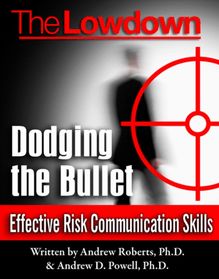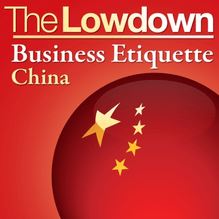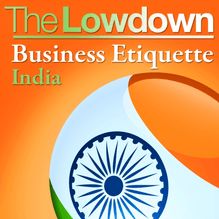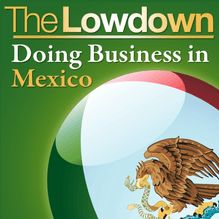-
 Univers
Univers
-
 Ebooks
Ebooks
-
 Livres audio
Livres audio
-
 Presse
Presse
-
 Podcasts
Podcasts
-
 BD
BD
-
 Documents
Documents
-
- Cours
- Révisions
- Ressources pédagogiques
- Sciences de l’éducation
- Manuels scolaires
- Langues
- Travaux de classe
- Annales de BEP
- Etudes supérieures
- Maternelle et primaire
- Fiches de lecture
- Orientation scolaire
- Méthodologie
- Corrigés de devoir
- Annales d’examens et concours
- Annales du bac
- Annales du brevet
- Rapports de stage
La lecture à portée de main
Vous pourrez modifier la taille du texte de cet ouvrage
Découvre YouScribe en t'inscrivant gratuitement
Je m'inscrisDécouvre YouScribe en t'inscrivant gratuitement
Je m'inscrisEn savoir plus
Vous pourrez modifier la taille du texte de cet ouvrage
En savoir plus

Description
Informations
| Publié par | Creative Content |
| Date de parution | 12 avril 2009 |
| Nombre de lectures | 0 |
| EAN13 | 9781906790301 |
| Langue | English |
Informations légales : prix de location à la page 0,0150€. Cette information est donnée uniquement à titre indicatif conformément à la législation en vigueur.
Extrait
The Lowdown: Blogging for Business
by James Long
THE LOWDOWN: BLOGGING FOR BUSINESS
First published in 2009
By Creative Content Ltd, Roxburghe House, Roxburghe House ,273-287 Regent Street, London, W1B 2HA.
Copyright © 2009 Creative Content Ltd
The moral right of James Long to be identified as the author of this work has been asserted by him in accordance with the Copyright, Designs and Patents Act, 1988.
All rights reserved. No part of this publication may be reproduced or transmitted in any form by any means, electronic or mechanical, including photocopying, recording or any information storage and retrieval system, without prior permission in writing from the publisher nor be otherwise circulated in any form or binding or cover other than that in which it is published.
Typesetting by CPI Rowe
Cover Design by Daniel at HCT Design
ISBN 978-1-906790-30-1
www.creativecontentdigital.com
TABLE OF CONTENTS
INTRODUCTION
Section 1. GETTING STARTED: Learn about blogs and blogging
Section 2. GETTING STARTED: Create a blog
Section 3. HOW TO set up your web feed or RSS
Section 4. HOW TO use web bookmarks to generate content and build an audience
Section 5. HOW TO: Craft the best content
Section 6. HOW TO: Start conversations and keep them going
Section 7. HOW TO: Find out who’s visiting your blog, and why
Section 8. HOW TO: Extend your reach online
Section 9. Making money from your blog
Section 10. Over to you!
INTRODUCTION
Welcome to ‘The Lowdown - Blogging for Business’: tips and tools that will keep you ahead of the game in creating and running your business blog.
On the internet, you never know who might become a customer – so it’s very important for businesses to put their best foot forward when it comes to crafting an internet presence. In the real world, you pay attention to how you present yourself to customers, by dressing appropriately and adjusting your behaviour depending on whether you’re in a boardroom negotiating a deal, or in a coffee shop getting to know somebody on a more personal level. The same should be true of your business online: you need a professional persona for doing business – your website - and a more friendly and informal persona for getting to know your customers. This will be your blog.
This guide is for anyone who wants to create a business blog, or for someone who is already running a blog but who wants to do more to grow the readership. And this guide is especially relevant to anyone running an SME (that’s a ‘small to medium enterprise’) who wants better exposure online, or who aims to build their brand online. I’ll be taking you through the key steps involved in starting a business blog and giving you some tips on how to make it stand out from the crowd. There are more than 100 million blogs on the internet today, so you need to think smart and play hard when you join them.
First I’ll talk about blogging in general – what people are doing with blogs, and which ones are most popular and interesting. Then we’ll discuss the free services and tools that are out there on the web for you to use, and which, if you know what to do with them, can give you a competitive advantage. We’ll cover the main points of creating a blog and why it’s important to use web feeds and online bookmarking. We’ll go through the stages of building a relationship with your visitors, and talk about crafting the best content for your purposes.
Then I’ll discuss how to use tools on the web to identify and analyse who’s visiting your blog, and how to build your audience. I’ll also discuss strategies for extending your reach online and distributing your content better, to make a little go a long way. I’ll recap at each stage with some key dos and don’ts – and finally, I’ll sum up with some tips on how you might make money from your blog, once it has really taken off. Ready? Let’s get started.
Section 1. GETTING STARTED: Learn about blogs and blogging
Blogs are defined in a variety of ways, but I like to think of a blog as your voice on the internet – your voice. And it’s FREE, for you to make, and for others to read. A blog is a way for you to deliver your message about your business to the world wide web – without interference, without barriers, and without cost.
An even more precise way of describing it would be that a blog is a self-published multimedia product, made available to everyone in the world, on the internet, for free. Did I mention that it’s free? Free.
Blogs are an extraordinarily popular medium. As I said, there are millions and millions out there - too many to read and follow. So the big questions are:
How do I create a blog that is a voice for my business? How do I get people to read my blog? How do I make it stand out from the rest?
In its simplest form, a blog is very like a website. It has a home page, where all the latest posts are listed, with the most recent at the top. There will often be a picture displayed across the top of the page, known as the ‘header.’ And there might be a tab called something like ‘About this blog’ or ‘Contact us’, which leads you to a page with information about the blog and whoever writes it. Usually it will have a two-column layout, with posts in one column, and navigation buttons and lists of links in the smaller, second column. These links may be to other blogs or other websites, and the navigation lists here let you browse the blog by date or by subject.
The posts are published chronologically because blogs are essentially an online evolution of the diary or log format – hence the name, web-log – but you don’t have to read them in that order. A post is like an entry in a diary, in that each is timed and dated. You can add pictures and photos to a post, and the blogging software you use enables you to format the font and layout of a post as you might do with a word-processed document. There are ways to add video clips, audio files and animations to a post and your blogging software will have help pages that detail how to do this. The writing style is usually informal, conversational, personal and fun.
Blogging represents your company online in a way that lets you reveal something of your company’s personality, interact with potential and existing customers, and share key information with people interested in your business: investors, customers, partners, or even competitors. We all know the goodwill value of entertaining customers, and having conversations with them outside work. Getting to know them, in other words. A blog is a fantastic tool to help you do this.
But remember that a blog isn’t the same as a website. The tone of your business website is likely to be more formal and official than the tone of your blog. It could also be that your blog, to be effective, needs to be ‘off-topic’ – for example, if your business is interior design, then having a website that outlines the services you offer and presents your portfolio, is appropriate. But a blog about interior design might be buried in the noise of all the other blogs on that subject, and overshadowed by the two or three leading blogs that already attract the majority of readers. So perhaps yours would need to focus on the interior designer’s lifestyle; or the challenges of sourcing the best materials; even a photographic catalogue of all the train stations and parking lots you visit in the course of your work, visiting suppliers and warehouses. Peel back the layers of your working life that people don’t normally see and show it to them on your blog. Keep it original and fresh.
A quick survey on the internet will show you that business blogs can be differentiated by the size of the organization they represent. For example, a very large business may have multiple blogs, to reach different customer groups. The BBC News website, for example, runs multiple blogs, each dedicated to a particular subject area within the site, such as business, arts and culture, and technology. All of these blogs can be reached from the same overall BBC News site, and they look similar – it’s the content that changes.
A corporate blog is used to convey the overarching brand values and messages of a very large business, a corporation. But for the purposes of this guide, I define a business blog as the blog of an SME (a small to medium enterprise).
The aims of a business blog are clearly defined - they are to reach your customers and build a relationship with them, to create a conversation with your market, and to showcase your products and abilities. But note that the last of these aims is product-related. A website can be a direct sales tool, if the visitor buys your product online directly from you, but a blog is an indirect sales tool, building a relationship with the customer, without any expectation of selling your product. This means the customer is more relaxed and receptive when it comes to what you have to say about yourself… and of course indirectly , about your product.
And it’s a great idea to enter the online discussion about your field. Look - you wouldn’t stand around at a trade fair while potential customers were in a rowdy group opposite and just watch them having a great big energetic discussion, swapping business cards and showing each other photos of their kids and inviting each other to parties – no! You’d step over to join them, and make sure you were handing out as many business cards as you received. Well, that big group of jolly customers is everyone on the web, and your blog is the way to step into the circle and join in.
Blogging is more popular than ever - but it’s also evolving. The internet is an ‘attention economy’, which means products and services on the web are competing for your attention as much, or more so, than they are competing for your actual money, to sell advertising, for example. When blogs first emerged they had a number of economic advantages. First, they were easy reading compared to websites; second, th
-
 Univers
Univers
-
 Ebooks
Ebooks
-
 Livres audio
Livres audio
-
 Presse
Presse
-
 Podcasts
Podcasts
-
 BD
BD
-
 Documents
Documents
-
Jeunesse
-
Littérature
-
Ressources professionnelles
-
Santé et bien-être
-
Savoirs
-
Education
-
Loisirs et hobbies
-
Art, musique et cinéma
-
Actualité et débat de société
-
Jeunesse
-
Littérature
-
Ressources professionnelles
-
Santé et bien-être
-
Savoirs
-
Education
-
Loisirs et hobbies
-
Art, musique et cinéma
-
Actualité et débat de société
-
Actualités
-
Lifestyle
-
Presse jeunesse
-
Presse professionnelle
-
Pratique
-
Presse sportive
-
Presse internationale
-
Culture & Médias
-
Action et Aventures
-
Science-fiction et Fantasy
-
Société
-
Jeunesse
-
Littérature
-
Ressources professionnelles
-
Santé et bien-être
-
Savoirs
-
Education
-
Loisirs et hobbies
-
Art, musique et cinéma
-
Actualité et débat de société
- Cours
- Révisions
- Ressources pédagogiques
- Sciences de l’éducation
- Manuels scolaires
- Langues
- Travaux de classe
- Annales de BEP
- Etudes supérieures
- Maternelle et primaire
- Fiches de lecture
- Orientation scolaire
- Méthodologie
- Corrigés de devoir
- Annales d’examens et concours
- Annales du bac
- Annales du brevet
- Rapports de stage

















